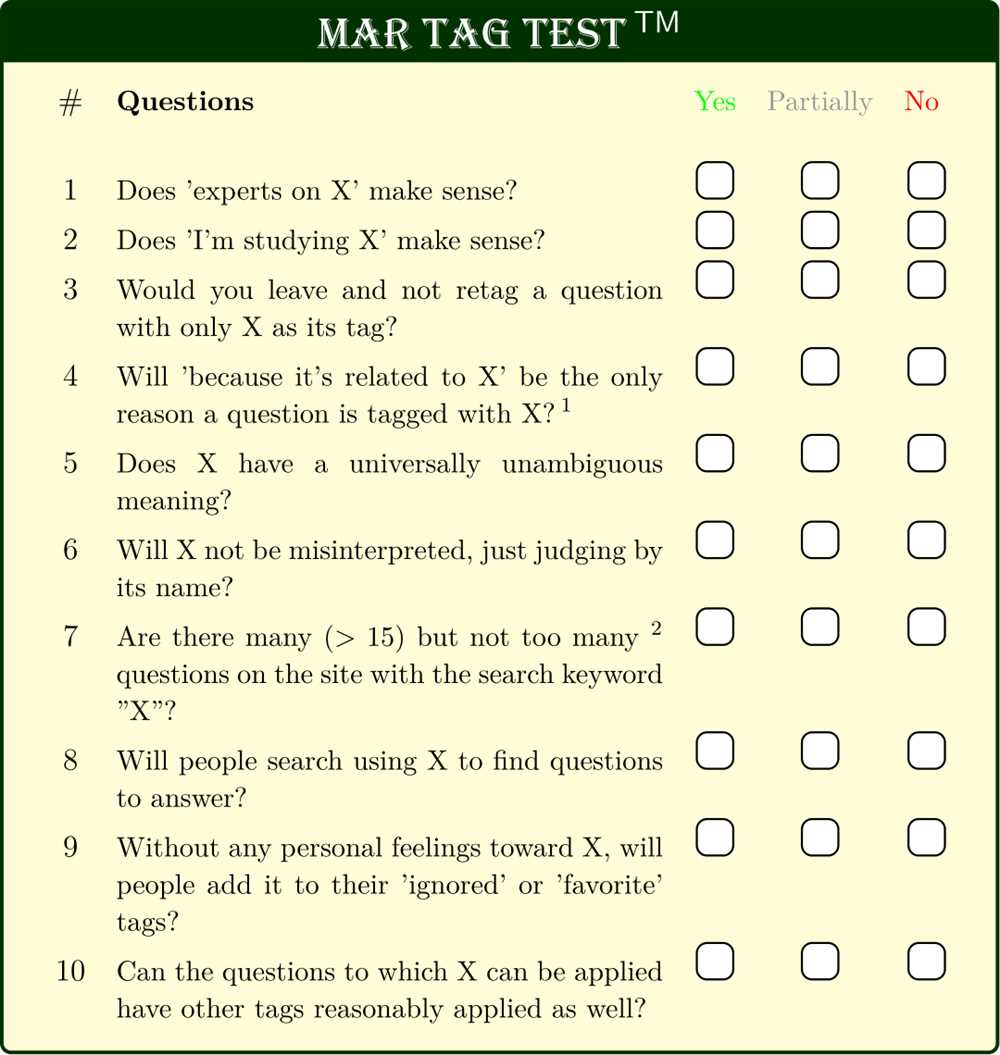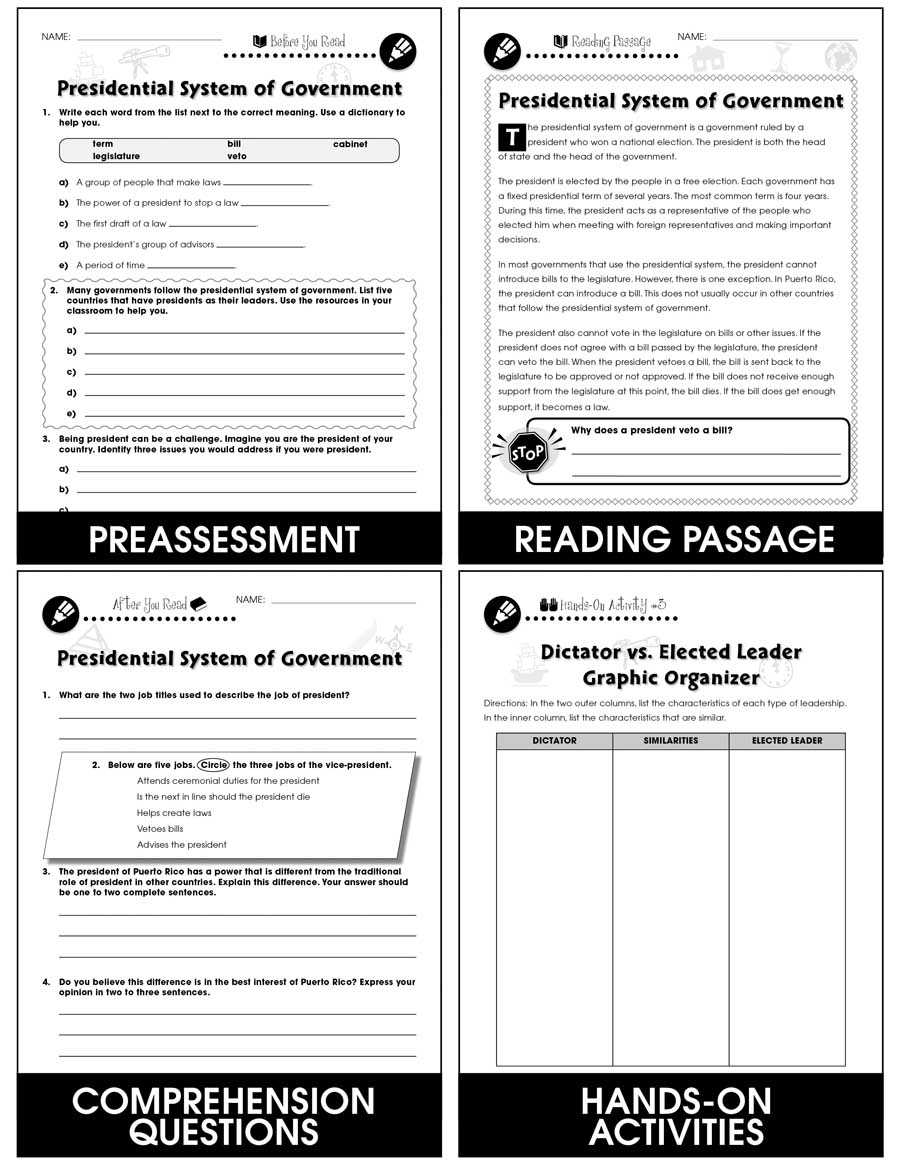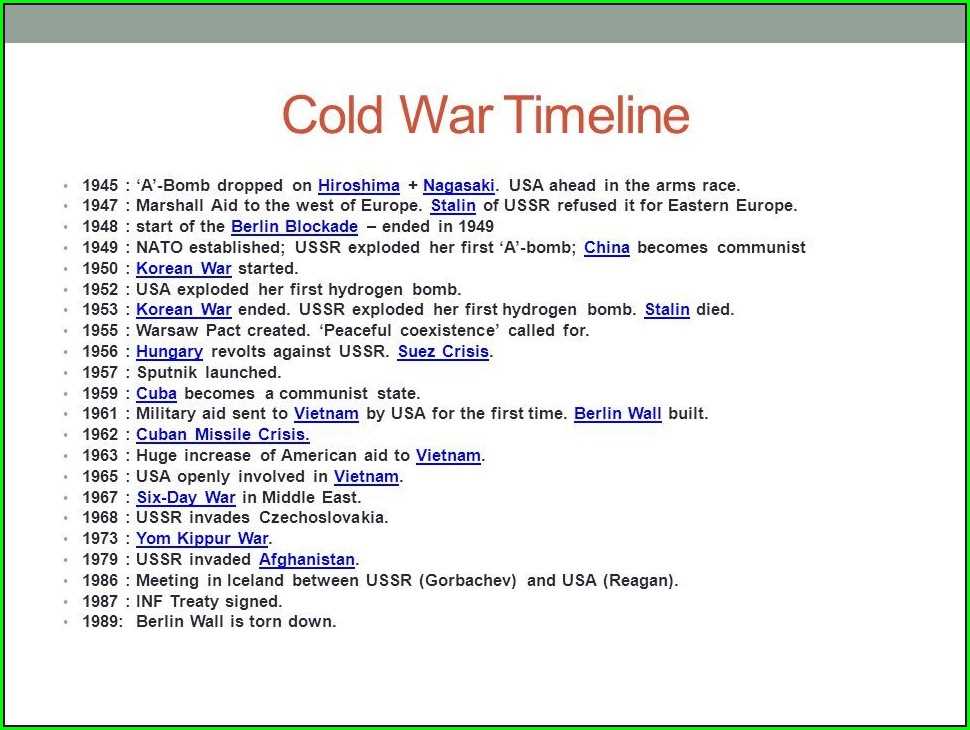
The Cold War was a period of political tension and military rivalry between the United States and the Soviet Union. It lasted from the end of World War II in 1945 until the early 1990s. During this time, the two superpowers engaged in a variety of conflicts and proxy wars, and the world stood on the brink of nuclear war on several occasions.
To test your knowledge of this important period in history, here are some Cold War test questions and answers. These questions will cover a range of topics, including the origins of the Cold War, key events, and major figures involved.
1. What were the main reasons for the start of the Cold War?
Answer: The main reasons for the start of the Cold War were ideological differences between the United States and the Soviet Union, the desire for global dominance, and the legacy of World War II.
2. When did the Cold War begin and end?
Answer: The Cold War began in 1945 with the end of World War II and lasted until the early 1990s, with the collapse of the Soviet Union.
3. What were some key events during the Cold War?
Answer: Some key events during the Cold War include the Berlin Blockade, the Korean War, the Cuban Missile Crisis, and the construction of the Berlin Wall.
4. Who were some important figures during the Cold War?
Answer: Some important figures during the Cold War include U.S. Presidents Harry S. Truman, Dwight D. Eisenhower, John F. Kennedy, and Ronald Reagan, as well as Soviet leaders Joseph Stalin, Nikita Khrushchev, and Mikhail Gorbachev.
5. How did the Cold War affect countries around the world?
Answer: The Cold War had a profound impact on countries around the world. It led to the division of Europe and the establishment of the Iron Curtain, increased militarization, the arms race, and the spread of proxy wars in regions such as Vietnam and Afghanistan.
By reviewing these questions and answers, you can deepen your understanding of the Cold War and its significance in world history.
Cold War Test Questions and Answers
During the Cold War, tensions between the United States and Soviet Union were high, and both countries engaged in a variety of strategies and conflicts to assert their dominance. Here are some key questions and answers related to the Cold War:
1. What was the Cold War?
The Cold War was a period of political and military tension between the United States and the Soviet Union, lasting from the end of World War II in 1945 until the early 1990s. It was called the Cold War because it never escalated into direct military conflict between the two superpowers, but rather was characterized by proxy wars, espionage, and an arms race.
2. What were the main causes of the Cold War?
The main causes of the Cold War were ideological differences between the United States and the Soviet Union. The US championed democracy and capitalism, while the USSR promoted communism and planned economies. Additionally, both countries sought to assert their influence and expand their spheres of influence around the world.
3. What were some key events of the Cold War?
Some key events of the Cold War include the Berlin Blockade, the Korean War, the Cuban Missile Crisis, and the construction of the Berlin Wall. These events demonstrated the heightened tensions and brinkmanship between the US and USSR, as well as the global implications of the Cold War.
4. How did the Cold War end?
The Cold War ended with the collapse of the Soviet Union in 1991. The USSR faced economic and political turmoil, and its satellite states in Eastern Europe began to break away. This led to the reunification of Germany, the dissolution of the Warsaw Pact, and the eventual end of the Cold War.
5. What were the long-term effects of the Cold War?
The long-term effects of the Cold War include the widespread arms race and development of nuclear weapons, the division of Germany and the Korean Peninsula, and the establishment of rival military alliances (NATO and the Warsaw Pact). It also shaped the geopolitical landscape of the world and influenced global politics for decades.
In conclusion, the Cold War was a complex and influential era in history, characterized by ideological differences, global tensions, and the threat of nuclear conflict. Understanding its causes, events, and consequences is crucial for comprehending the political and social dynamics of the post-World War II era.
What was the Cold War?
The Cold War was a period of geopolitical tension between the United States and the Soviet Union, which lasted from the end of World War II until the early 1990s. It was characterized by political, economic, and military competition, as well as ideological differences between the two superpowers.
At the heart of the Cold War was the ideological conflict between capitalism and communism. The United States, representing the capitalist world, sought to promote democracy, free markets, and individual freedoms. On the other hand, the Soviet Union, representing the communist bloc, aimed to spread socialist revolution, state control of the economy, and collective equality.
Building up after World War II, the Cold War saw both the United States and the Soviet Union engaging in an arms race, with both sides developing and stockpiling nuclear weapons. This led to the development of deterrence strategies, such as mutually assured destruction (MAD), where both sides had enough nuclear capabilities to ensure the destruction of the other in the event of an attack.
The Cold War also involved various proxy wars and conflicts, such as the Korean War and the Vietnam War, where the United States and the Soviet Union supported opposing sides. Additionally, the space race between the two superpowers, culminating in the 1969 moon landing by the United States, was a symbolic battle for technological and ideological supremacy.
The end of the Cold War came with the collapse of the Soviet Union in 1991, marking the victory of the United States and the capitalist world. This marked the end of the bipolar world order and the beginning of a new era of global politics.
When did the Cold War begin and end?

The Cold War was a period of political tension and military rivalry between the United States and the Soviet Union, which lasted approximately from 1947 to 1991. It began shortly after World War II, when the two superpowers emerged as the dominant global powers and found themselves on opposite sides of the ideological divide.
The Cold War officially started in 1947 with the implementation of the Truman Doctrine and the Marshall Plan, which aimed to contain and combat the spread of communism. The tension between the United States and the Soviet Union intensified over the next few decades, marked by events such as the Berlin Blockade, the Korean War, and the Cuban Missile Crisis.
Key Dates:
- 1947: The Truman Doctrine and the Marshall Plan are implemented.
- 1948-1949: The Berlin Blockade and Airlift take place.
- 1950-1953: The Korean War occurs.
- 1962: The Cuban Missile Crisis brings the world to the brink of nuclear war.
- 1985-1991: The reforms initiated by Soviet leader Mikhail Gorbachev lead to the end of the Cold War.
- 1991: The Soviet Union collapses, marking the official end of the Cold War.
With the fall of the Soviet Union in 1991, the Cold War came to an end. This marked a significant shift in global politics and the beginning of a new era. It brought about changes in international relations and led to the emergence of new power dynamics on the world stage. The legacy of the Cold War continues to shape geopolitics and influence various aspects of international affairs to this day.
Causes of the Cold War
The Cold War was a period of increased tension and hostility between the United States and the Soviet Union, lasting from the end of World War II until the early 1990s. There were several factors that contributed to the start and escalation of the Cold War.
1. Ideological Differences: The Cold War was fundamentally a conflict between two different ideologies: capitalism and communism. The United States, as a capitalist democracy, sought to promote free markets and individual freedoms, while the Soviet Union aimed to spread communism and establish a socialist system. These opposing ideologies created a deep divide between the two superpowers.
2. World War II Alliances: During World War II, the United States and the Soviet Union joined forces as allies to defeat Nazi Germany. However, their alliance was based on expediency and a shared goal, rather than genuine trust or friendship. After the war, the two countries began to see each other as potential threats and rivals rather than allies, leading to heightened tensions.
3. Nuclear Arms Race: The development and proliferation of nuclear weapons added another layer of tension to the Cold War. Both the United States and the Soviet Union invested heavily in the research and production of nuclear weapons, leading to a dangerous arms race. The fear of nuclear annihilation created a constant state of anxiety and suspicion.
4. Competition for Influence: The United States and the Soviet Union competed for influence and control over other countries around the world. They sought to gain allies and expand their spheres of influence, leading to proxy wars and conflicts in various regions, such as the Korean War and the Vietnam War.
5. Misunderstandings and Mistrust: Throughout the Cold War, there were numerous misunderstandings and miscommunications between the United States and the Soviet Union. This lack of trust and understanding further fueled the conflict and made it difficult to resolve disputes peacefully.
Overall, the Cold War was driven by a complex combination of factors, including ideological differences, wartime alliances, the nuclear arms race, competition for influence, and mistrust. These causes created a tense and volatile international climate that lasted for several decades.
What countries were involved in the Cold War?
The Cold War was a period of geopolitical tension and ideological conflict between the United States and the Soviet Union, which lasted from the end of World War II until the early 1990s. Both superpowers sought to expand their influence around the world and promote their respective ideologies. While the conflict was primarily between the U.S. and the Soviet Union, it involved numerous other countries that aligned themselves with one of the superpowers or were affected by their rivalry.
The United States and its western allies formed the NATO alliance, which included countries such as the United Kingdom, France, West Germany, and Canada. These countries were committed to countering Soviet influence and promoting democracy and capitalism. On the other side, the Soviet Union formed the Warsaw Pact, which included countries in Eastern Europe such as East Germany, Poland, Czechoslovakia, and Hungary. These countries were satellite states of the Soviet Union and were aligned with its communist ideology.
Other countries around the world also played significant roles in the Cold War. For example, China initially aligned with the Soviet Union but later developed its own form of communism and became a major player on the world stage. Countries in Asia, Africa, and Latin America were often caught in the middle of the superpowers’ competition, as the U.S. and the Soviet Union sought to gain their support and influence their political and economic systems.
In summary, the Cold War involved the United States, the Soviet Union, and their respective alliances, but its impact was felt worldwide. The ideological conflict between capitalism and communism shaped global politics and had profound effects on countries and regions far beyond the borders of the U.S. and the Soviet Union.
Major Events of the Cold War
The Cold War was a period of intense geopolitical tension between the United States and the Soviet Union, which lasted from the end of World War II in 1945 until the early 1990s. During this time, several major events occurred that shaped the course of the conflict and had significant global implications.
1. The Berlin Airlift (1948-1949)
One of the first major events of the Cold War was the Berlin Airlift, which took place from 1948 to 1949. After the Soviet Union blocked the Western Allies’ land access to West Berlin, they launched a massive airlift operation to supply the city with food, fuel, and other essential goods. The Berlin Airlift showcased the determination and resolve of the Western powers against Soviet aggression and ultimately led to the lifting of the blockade.
2. The Korean War (1950-1953)

The Korean War was another significant event of the Cold War. It began when North Korea, supported by the Soviet Union and China, invaded South Korea. The United States, along with other Western countries, intervened to defend South Korea. The war ended in a stalemate, with an armistice signed in 1953, dividing Korea into North and South. This conflict demonstrated the proxy nature of the Cold War, as it was fought between communist and capitalist forces.
3. The Cuban Missile Crisis (1962)
The Cuban Missile Crisis was perhaps the closest the world came to a full-scale nuclear war during the Cold War. It occurred when the United States discovered that the Soviet Union had placed nuclear missiles in Cuba, just 90 miles off the coast of Florida. Through intense negotiations and brinkmanship, the crisis was resolved peacefully, with the United States removing its missiles from Turkey, and the Soviet Union removing its missiles from Cuba. The Cuban Missile Crisis highlighted the dangers and consequences of the Cold War arms race between the superpowers.
4. The Vietnam War (1955-1975)
The Vietnam War was a long and costly conflict that had significant implications for the Cold War. The United States, fearing the spread of communism, became involved in the war to support South Vietnam against the communist forces of North Vietnam. The war was highly controversial, both domestically and internationally, and ultimately ended in defeat for the United States. The Vietnam War highlighted the difficulties and complexities of fighting guerilla warfare in a Cold War context.
5. The Fall of the Berlin Wall (1989)
The fall of the Berlin Wall in 1989 symbolized the end of the Cold War. The wall had divided East and West Berlin since 1961, serving as a physical and symbolic barrier between the communist and capitalist worlds. Its fall was a result of various factors, including political change in the Soviet Union, economic pressures, and the desire for freedom among the people of East Germany. The fall of the Berlin Wall marked the beginning of the reunification of Germany and the collapse of the Eastern Bloc, leading to the eventual dissolution of the Soviet Union.
These were just a few of the major events that defined the Cold War era. The conflict had far-reaching consequences and shaped the political, economic, and social landscape of the world for decades. It serves as a reminder of the dangers of intense rivalry between superpowers and the need for diplomatic solutions to prevent global catastrophe.